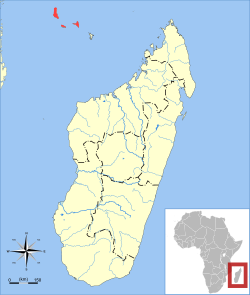| Comoro rousette | |
|---|---|
| Scientific classification | |
| Kingdom: | Animalia |
| Phylum: | Chordata |
| Class: | Mammalia |
| Order: | Chiroptera |
| Family: | Pteropodidae |
| Genus: | Rousettus |
| Species: | R. obliviosus |
| Binomial name | |
| Rousettus obliviosus Kock, 1978 | |
 | |
| Comoro rousette range | |
The Comoro rousette (Rousettus obliviosus) is a species of megabat in the family Pteropodidae endemic to the Comoros Islands. Its natural habitats are subtropical or tropical moist lowland forests, caves, plantations, and urban areas. [1]
